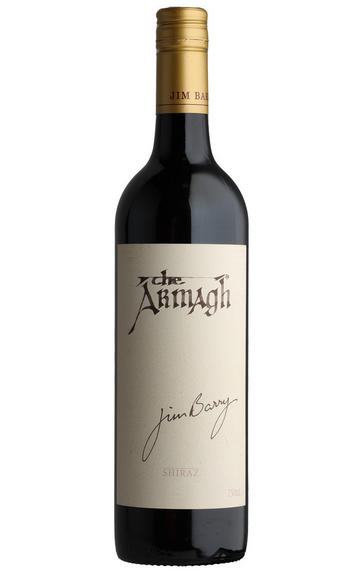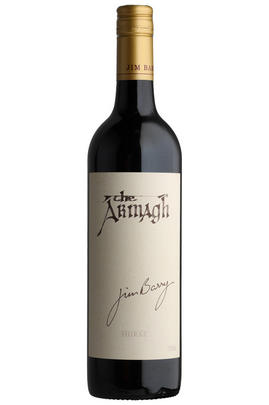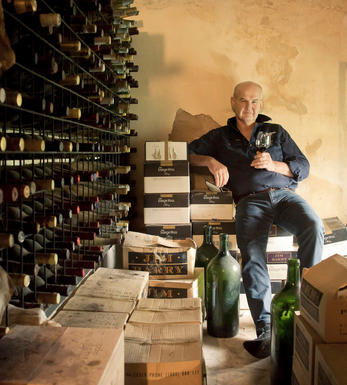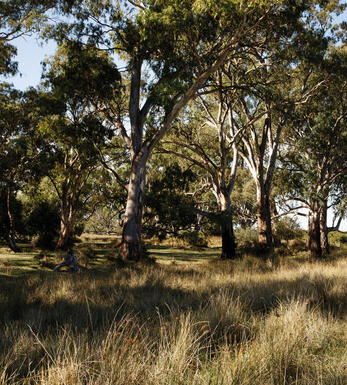
2018 Jim Barry, The Armagh Shiraz, Clare Valley, Australia

Critics reviews
Drink 2025 to 2042
Jane Anson, Inside Bordeaux (August 2022)
Blended and set to be bottled a month after my visit, the 2018 The Armagh Shiraz looks to be a near-repeat of the impressive 2016. It will be given three years in bottle prior to release, so it's still a few years out. That said, it combines luxurious notes of maple syrup with bright red berries in what sounds like a dessert, yet it maintains a sense of savoriness and drinkability. It's full-bodied, richly concentrated and velvety in texture, with a tremendously long, mouthwatering finish.
Drink 2023 - 2045
Joe Czerwinski, Wine Advocate (Feb 2020)
This has attractive dark peaches, red cherries, blood oranges and really exotic fruit aromas with such an expressive nose that is swathed in fragrant spices. The palate has strongly defined dark plums and blackberries and mouthwateringly intense dark cherries. Super succulent and deeply flavored with silky, gently sinewy, young-tannin muscle. A great Armagh for sure. Try from 2028 and drink over the following two decades. Screw cap.
James Suckling, jamessuckling.com (Jun 2020)
A meaty, savoury, spiced nose, something so welcoming about it, warm and friendly with a touch of perfume, dark chocolate, cinnamon and pink peppercorn to the blackcurrant, damsons and plums. Rich, ample and generous, yet delivered with such supple and velvety-soft tannins. This has an elegance to it, a cool sophistication in terms of the profile - neat and tidy, quite linear right now, brimming with energy, not yet fully expansive or loose, but quietly controlled and calm. It's confident though with invigorating acidity and I love the focus, detail and the purity of fruit. Sweet red fruits - strawberries, raspberries and red cherries with a slight balsamic, pomegranate edge that is so delicious. Juicy, crunchy, succulent and ripe but with an effortless edge to it. Supremely drinkable and likeable - what a gorgeous wine! A quality vintage and excellent winemaking skill on show. Ageing 18 months in French oak.
Drink 2025 - 2045
Georgina Hindle, Decanter.com (Jul 2022)
About this WINE

Jim Barry Wines
The late Jim Barry was a pioneer of the Australian wine industry. He was the first qualified winemaker to work in the Clare Valley of South Australia and with his wife, Nancy, built a successful wine business which has produced trophy-winning wines since its establishment in 1959. Today, the company is headed by Jim’s second son Peter, who took over from his father as Managing Director.
Peter has further extended the company’s vineyard holdings to the extent that they are now totally self-sufficient for the needs of their various brands. They own 10 vineyards in the Clare Valley covering 200 hectares and a further 14-hectare estate in the Barossa Valley, giving them access to prime quality fruit with which to create and develop premium brands. The business has acquired much more of an international feel under Peter’s stewardship and 50% of production is now destined for overseas markets.
Central to the winery’s fame has been a series of super-premium wines from special vineyard sites which produce outstanding examples of the relevant varietal or blend of varietals. McRae Wood Shiraz, for example, is made from a 70-acre piece of land which Jim Barry purchased from Duncan McRae Wood in 1964, knowing that it would be an ideal site for top-class Shiraz. It was his first vineyard.
The Armagh is another premium Shiraz, the pick of the Jim Barry range, and this takes its name from a patch of lush, rolling farmland which so reminded early Irish settlers of their Ulster homeland that they named it Armagh.
The philosophy of the estate is to locate vineyards capable of producing exceptional quality fruit and then to retain all of that quality in the winemaking process. It is also a policy to hold these wines in reserve until they are ready to drink, a laudable objective which requires significant investment. Although these top wines can be drunk on release it’s fair to say that all have considerable development potential over many years in bottle.

Clare Valley
If ever there was a list of Australian terroirs, Clare Valley would be near the top. Its geographical position an hour north of Adelaide, its latitude and heat degree days (over the growing season) suggest a very hot clime suited to reds. Yet white wines prevail as these factors are offset by an average altitude of 398m (versus Geisenheim at 100m), low relative humidity (37 percent versus 56 percent), high sunshine hours, significant continentality levels (albeit less Geisenheim), cooling south-westerly sea breezes and prime, low, fertile red loam over marly limestone and shale soils set in cooling hill pockets. Irrigation is strictly controlled and less called for in the dry climate.
Taut lime-sherbet Rieslings with fine minerality and ageing capacity are the region's most famous product, followed by Shiraz and Cabernet Sauvignon.
The town of Clare, founded by Irishman Edward Gleeson in 1840, first prospered on the back of copper mining, then a wheat and wine boom during the late 1800s. Vines were first planted in 1853 by an itinerant Cornishman at a site near present-day Watervale, and Birks Wendouree was founded before the century was over. The corporates moved in during the 1960s dry-wine boom, although there remains a core group of small, family-owned estates.
Recommended Producers: Grosset and Jim Barry Wines are among the leading exponents of the Clare Valley style.

Syrah/Shiraz
A noble black grape variety grown particularly in the Northern Rhône where it produces the great red wines of Hermitage, Cote Rôtie and Cornas, and in Australia where it produces wines of startling depth and intensity. Reasonably low yields are a crucial factor for quality as is picking at optimum ripeness. Its heartland, Hermitage and Côte Rôtie, consists of 270 hectares of steeply terraced vineyards producing wines that brim with pepper, spices, tar and black treacle when young. After 5-10 years they become smooth and velvety with pronounced fruit characteristics of damsons, raspberries, blackcurrants and loganberries.
It is now grown extensively in the Southern Rhône where it is blended with Grenache and Mourvèdre to produce the great red wines of Châteauneuf du Pape and Gigondas amongst others. Its spiritual home in Australia is the Barossa Valley, where there are plantings dating as far back as 1860. Australian Shiraz tends to be sweeter than its Northern Rhône counterpart and the best examples are redolent of new leather, dark chocolate, liquorice, and prunes and display a blackcurrant lusciousness.
South African producers such as Eben Sadie are now producing world- class Shiraz wines that represent astonishing value for money.


Buying options
Add to wishlist
Description
Third year for The Armagh on the Place de Bordeaux, and it's an exceptional vintage, packed full of fragrant aromatics and plump, seductive, spiced and nuanced black cherry and damson fruit. Grilled sandalwood oak, firm tannins, plenty of black chocolate shavings, mandarin peel, the stone fruits edge of fully ripe Shiraz (almost as if it has been vinified with Viognier), tempered by sage and freshly cut rosemary herbs. This grabs you and stretches out through the palate. From a superb vineyard planted in 1968 by Jim Barry, with low yields of around 27hl/h (equivalent to less than two tonnes per acre), this is exceptional, with decades ahead of it. I suggest waiting a few years before opening, but the tannins are polished enough that you don't have to if you are prepared to give it a good long carafe. Made by Peter and Tom Barry. Sandy-gravel soils. 75% new oak, mainly 300l with a few 500l, unfined and unfiltered.
Drink 2025 to 2042
Jane Anson, Inside Bordeaux (August 2022)
wine at a glance
Delivery and quality guarantee